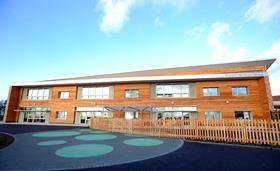BREEAM for schools still ŌĆśunder reviewŌĆÖ despite publication of baseline design guidance

The government has yet to decide on the future of BREEAM in schools despite the publication of design guidance for its flagship ┬Ż2.4bn school building programme.
The future of the requirement that new schools achieve a BREEAM rating of ŌĆśvery goodŌĆÖ has been uncertain since Michael Gove placed the policy under review, citing it as overly bureaucratic and costly.
It was expected that the publication of the governmentŌĆÖs baseline design guidance yesterday would resolve the future of sustainability requirements in schools.
However, Mike Green, Education Funding Agency director of capital said yesterday that BREEAM was ŌĆ£still under reviewŌĆØ and that the outcome of that review was now ŌĆ£on its own trajectory that is not related to baseline designsŌĆØ.
Green insisted that the baseline designs for schools to be built under the Priority Schools ║├╔½Ž╚╔·TV Programme (PSBP) would deliver schools that met BREEAM ŌĆśvery goodŌĆÖ or better, but would not say whether schools under the scheme would have to go through BREEAM assessments.
He said the designs had been assessed as BREEAM ŌĆśvery goodŌĆÖ but this was based on the design alone. He added: ŌĆ£BREEAM hasnŌĆÖt played a big role in these designs - it wasnŌĆÖt what we were working towards,ŌĆØ he said.
He said the EFA had set out a set of environmental standards within the design guidance which it would expect to be met, which focused in particular on overheating and energy consumption. He said these had been identified as areas in need of improvement through post-occupancy work on previous schools.
the ┬Ż2bn PFI element of the PSBP will also include a new performance-in-use measure, with PFI payments based on whether the environmental standards are met after the building is completed.
The
- Cross ventilation with no cold drafts and heat recovery in winter
- Use of thermal mass, night cooling and cross ventilation to prevent summertime overheating
- Daylight design to produce balanced glare-free luminance across the classrooms and to reduce energy consumption due to electric lighting
- Acoustics to provide good listening conditions with classrooms easily upgradable to teach children with hearing impairments
- Energy and water efficient buildings that are easy to monitor through internet based metering of separate energy end uses



























1 Readers' comment